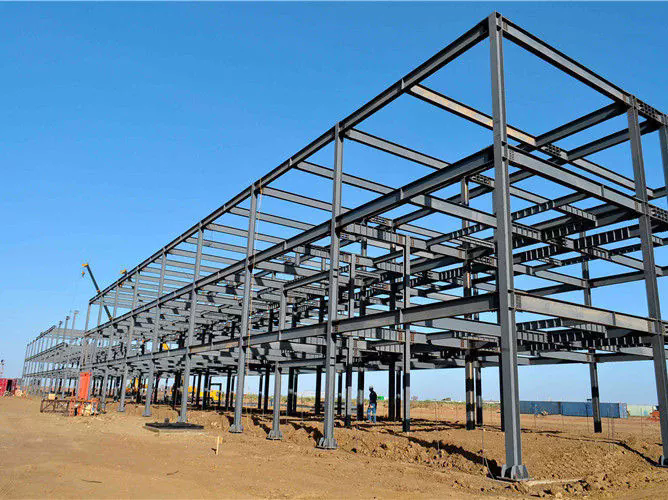Steel Frame Building: Strong, Versatile, and Built to Last
2025-07-17
A steel frame building is a structure that uses a skeleton frame of vertical steel columns and horizontal I-beams to support floors, roofs, and walls. Known for its strength, durability, and speed of construction, steel framing is widely used in commercial, industrial, agricultural, and even residential projects.
What Is a Steel Frame Building?
A steel frame building is built using structural steel components that are bolted or welded together to form the skeleton of the building. This frame carries the entire load of the structure, with non-load-bearing walls added later for insulation, aesthetics, or interior layout.
Steel frame buildings can range from small workshops to massive skyscrapers, warehouses, and aircraft hangars.

Key Features
High Strength-to-Weight Ratio: Steel is stronger and lighter than many traditional materials like wood or concrete.
Design Flexibility: Allows for wide open spaces without interior support walls or columns.
Fast Construction: Prefabricated steel components speed up the building process.
Fire and Pest Resistance: Unlike wood, steel doesn’t warp, rot, or attract termites.
Eco-Friendly: Steel is 100% recyclable and often made from recycled materials.
Types of Steel Frame Construction
1. Rigid Frame
Common for warehouses and industrial buildings. Offers wide open interiors.
2. Light Gauge Steel Framing
Used in residential or small commercial buildings; similar to wood framing but with steel studs and tracks.
3. Modular/Pre-Engineered Buildings (PEBs)
Pre-designed steel structures that are shipped and assembled on-site. Cost-effective and quick to build.
4. High-Rise Steel Framing
Used in skyscrapers and multi-story office buildings. Provides excellent vertical and lateral support.
Applications
Industrial Facilities (factories, workshops, storage)
Commercial Buildings (offices, showrooms, malls)
Agricultural Structures (barns, greenhouses, grain storage)
Residential Homes (modern steel-frame houses, tiny homes)
Public Infrastructure (airports, stadiums, schools)
Advantages of Steel Frame Buildings
Durability: Withstands harsh weather, earthquakes, and heavy loads.
Speed: Reduced construction time leads to lower labor costs.
Low Maintenance: Resists corrosion when properly coated or galvanized.
Cost Efficiency: Especially in large-scale or long-span projects.
Customizable: Easily modified or expanded in the future.
Considerations
Thermal Conductivity: Steel conducts heat, so good insulation is essential.
Corrosion Protection: Galvanizing or protective coatings are necessary in humid or marine environments.
Initial Cost: May be higher than wood, but long-term savings offset this.
Conclusion
Steel frame buildings offer a modern, reliable, and sustainable solution for a wide range of construction needs. With unmatched strength, flexibility, and speed, they continue to shape the future of architecture and infrastructure—delivering structures that are built to last.


